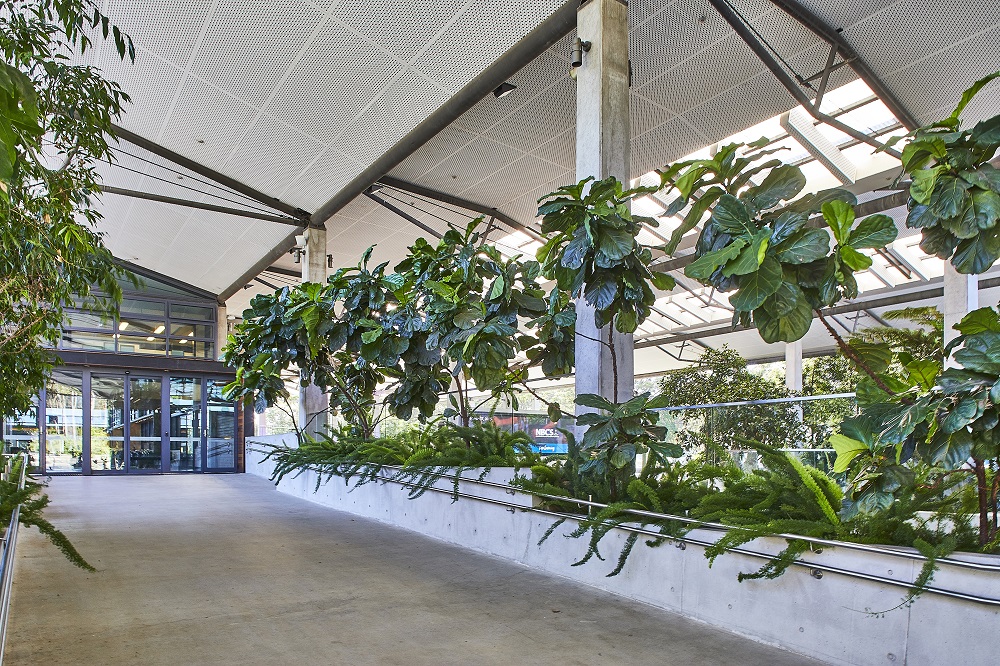Biophilia refers to the innate human connection with nature. It is a concept that has been studied by scientists and researchers for decades and has gained increasing attention in recent years as a way to improve well-being and mental health.
Incorporating biophilic design elements in schools can provide numerous benefits to students, teachers, and the overall learning environment. We explore the importance of biophilia in schools and why it should be a priority for educators.
Improved Mental Health and Well-being
Studies have shown that exposure to natural environments can help reduce stress, anxiety, and depression in individuals. This is especially important for students who are dealing with academic pressures, social anxieties, and other stressors that come with school life. Incorporating natural elements like plants, water, and natural light into school design can help create a calming and soothing environment that promotes mental health and well-being.
Increased Academic Performance
In addition to improving mental health, biophilic design has been shown to improve academic performance. Natural light, for example, has been shown to increase productivity and alertness in students, while the presence of plants has been linked to improved cognitive function and concentration. By incorporating these elements into school design, educators can create an environment that is conducive to learning and academic success.
Enhanced Creativity and Imagination
Biophilic design can also enhance creativity and imagination in students. Studies have shown that exposure to natural environments can help stimulate the imagination and foster creativity. By incorporating natural elements like plants, trees, and water features, educators can create a space that encourages exploration, discovery, and creativity.
Improved Air Quality
Indoor air pollution is a significant concern in many schools, as poor air quality can have a negative impact on student's health and academic performance. Plants are natural air purifiers and can help improve air quality by removing pollutants like carbon dioxide, formaldehyde, and benzene from the air. By incorporating plants into school design, educators can create a healthier learning environment that promotes well-being and academic success.
Promoting Sustainability and Environmental Awareness
By incorporating biophilic design elements, schools can also promote sustainability and environmental awareness among students. Exposure to natural environments can help students develop an appreciation for nature and understand the importance of protecting the environment. This can help create a generation of environmentally conscious individuals committed to protecting the planet.
Biophilia at Northern Beaches Christian School
At the Northern Beaches Christian School, designed by WMK, biophilia is deliberately woven into every element of the school, actively promoting a sense of oneness with nature and providing an inspired learning environment. The playspaces and outdoor learning areas are designed to seamlessly interconnect with the buildings and natural surroundings reflecting the school’s unique bushland location and indoor/outdoor learning ethos.
The playscapes and yarning circles are defined by greenery with the chosen materials and colour palette incorporating natural elements of sandstone rocks, concrete and timber.

Similarly, connecting pathways are also defined by abundant planting, and the classrooms look out onto lush landscaped areas where the species are selected for their hardiness, low water use, and low maintenance.

The COLA spaces adjacent to the classrooms, whilst providing the required weather protection are also defined by a rainforest inspired planting. The roof is designed to cut out the harsh rays of the summer sun whilst also maximising the diffused natural light coming into the COLA space. The experience provides for a calming environment in which kids can connect, play and learn.

The generous use of native planting delivers an appreciation for and supports the area's wildlife population with an array of native birdlife regularly visible amongst the shrubs and trees and meandering through the outside areas during quieter moments.

The lush planting adjacent to classrooms is reminiscent of forest bathing and evokes a sense of relaxed and healthy wellbeing both physically and mentally leading to a reduction in the stress hormone cortisol and boosting the immune system.


